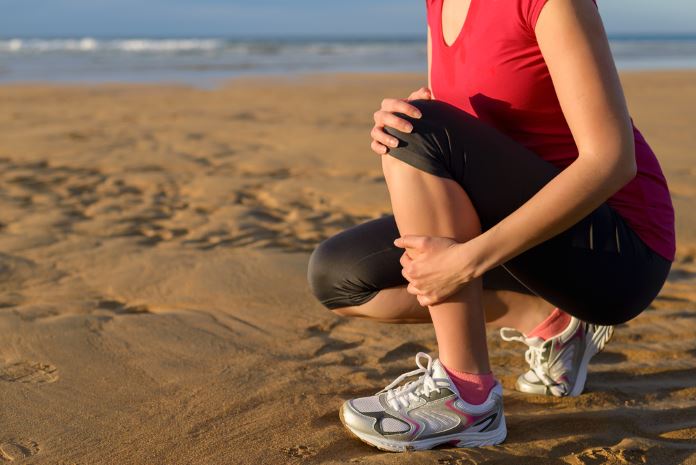
Many of us remember shin splints from our childhood after a day spent in the park, playing tennis on asphalt courts with thin soled rubber tennis shoes or after running for hours through the neighborhood with our friends. Once we got home, our shins were on fire and we didn’t know why. As we got older, we were more careful before physical activities, taking time to stretch before we exercised. Yet, shin splints still occur and are one of the most common complaints we hear from our patients.
What Causes Shin Splints?
Also known as Medial Tibial Stress Syndrome, shin splints are a common injury affecting athletes and runners. Shin splints are characterized by pain in the lower region of the leg between the knee and ankle. Or in the middle to lower portion of the lateral part of the tibia, the larger of the two bones of the lower leg. They are caused by several overlapping factors such as weak core muscles, running uphill, downhill or on uneven terrain or on hard surfaces. If your gait is off, shin splints can occur when the front of the shin gets overstressed and overused from lifting the toes during walking or running.
Improper footwear and worn-out shoes can also cause shin splints. As you repeatedly hit a hard surface without the proper support, the stress on the bones cannot absorb the impact forces as the foot repeatedly hits the ground. Your tibia will actually bend or bow from the pressure causing shin splints.
Prevention
To prevent shin splints, it’s important to do conditioning before you start any new activities. Training is essential, and you will need to strengthen the larger muscle groups like hips and knees. Yet you must also be flexible in the opposing muscle groups. Warm up exercises are crucial as well. Exercises such as the runners stretch, heel/toe raises, and regular squats will help ward off shin splints. As stated before, we can’t stress enough the importance of the proper footwear.
If you get shin splints, you will develop a recurring dull or razor-like ache along the inner part of the tibia or shin. This pain will occur during all exercise or physical activity and touching the sore spot can aggravate the pain. You might notice tenderness, soreness or pain along the inner side of your shinbone and mild swelling. At first, the pain might stop when you stop exercising. Eventually, however, the pain can be continuous and might progress to a stress reaction or stress fracture if not treated.

Treatment Options
It’s important to treat shin splints immediately. Typical home treatments include rest, ice, and strengthening exercises before you return to any strenuous activities. I cannot stress proper footwear enough. Insoles or orthotics may be recommended if your arches collapse or flatten when you stand. If you don’t get better, the next step is physical therapy sessions where you will do strengthening exercises to improve foot strike and body mechanics.
Download a Free Copy of our Shin Splints Stretching and Exercise Guide
We also recommend foam rolls to loosen the tight fascia (the material that wraps most of our muscles) and manual massage. Kinesio taping is another successful way to treat shin splints. The Kinesio tape such as Rocktape is used by physical therapists to change muscle tone, move lymphatic fluids, correct movement patterns, and improve posture. When applied correctly, it lifts the skin to create a small space between the muscle and dermis layers. That space takes the pressure off swelling or injured muscles, allows smooth muscle movement and makes space for drainage and blood flow.
This article is part of the Discussion Series on Running Injuries. Please feel free to Contact Us with any questions or you can Make An Appointment to see Dr. Caruso.